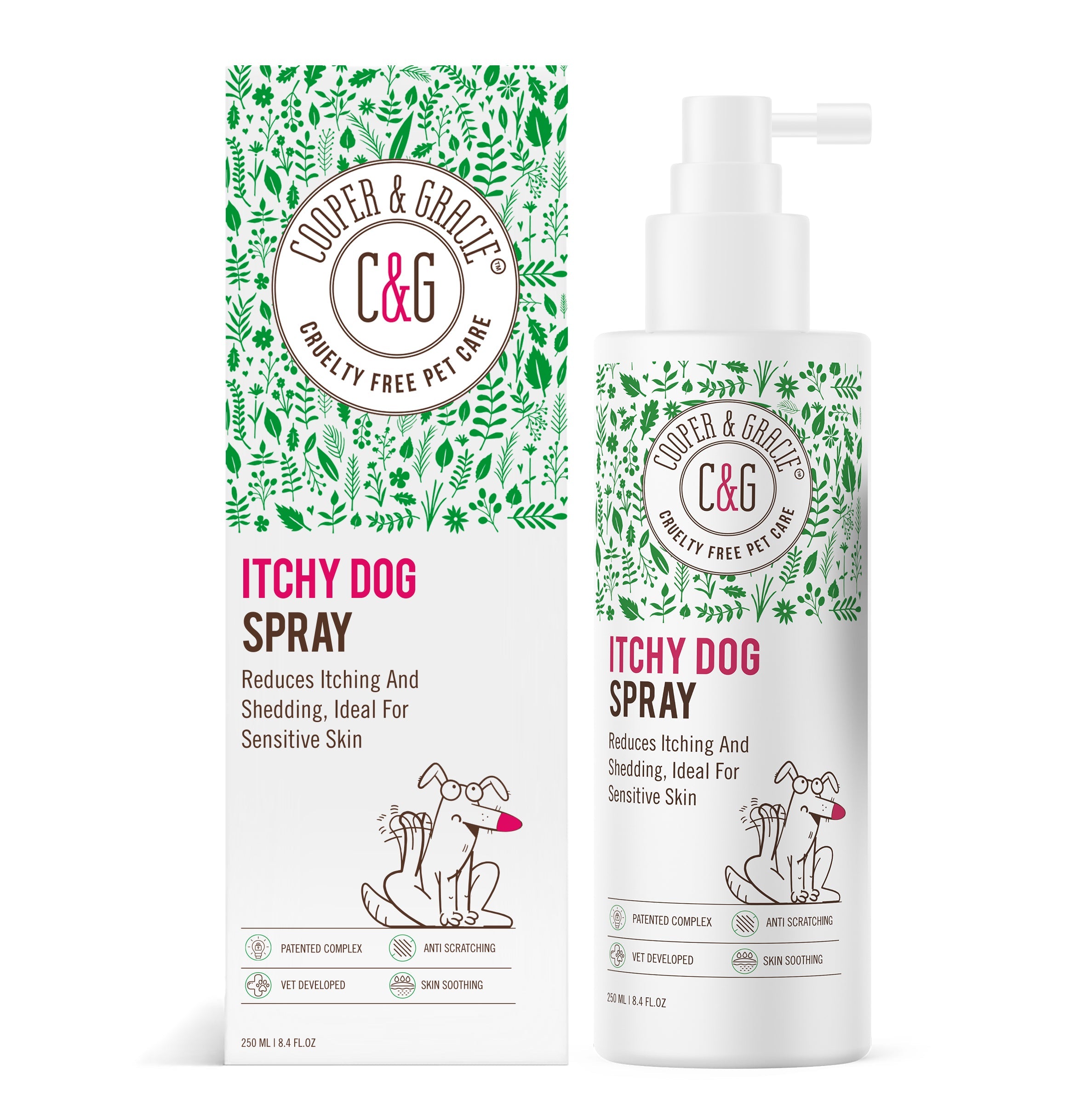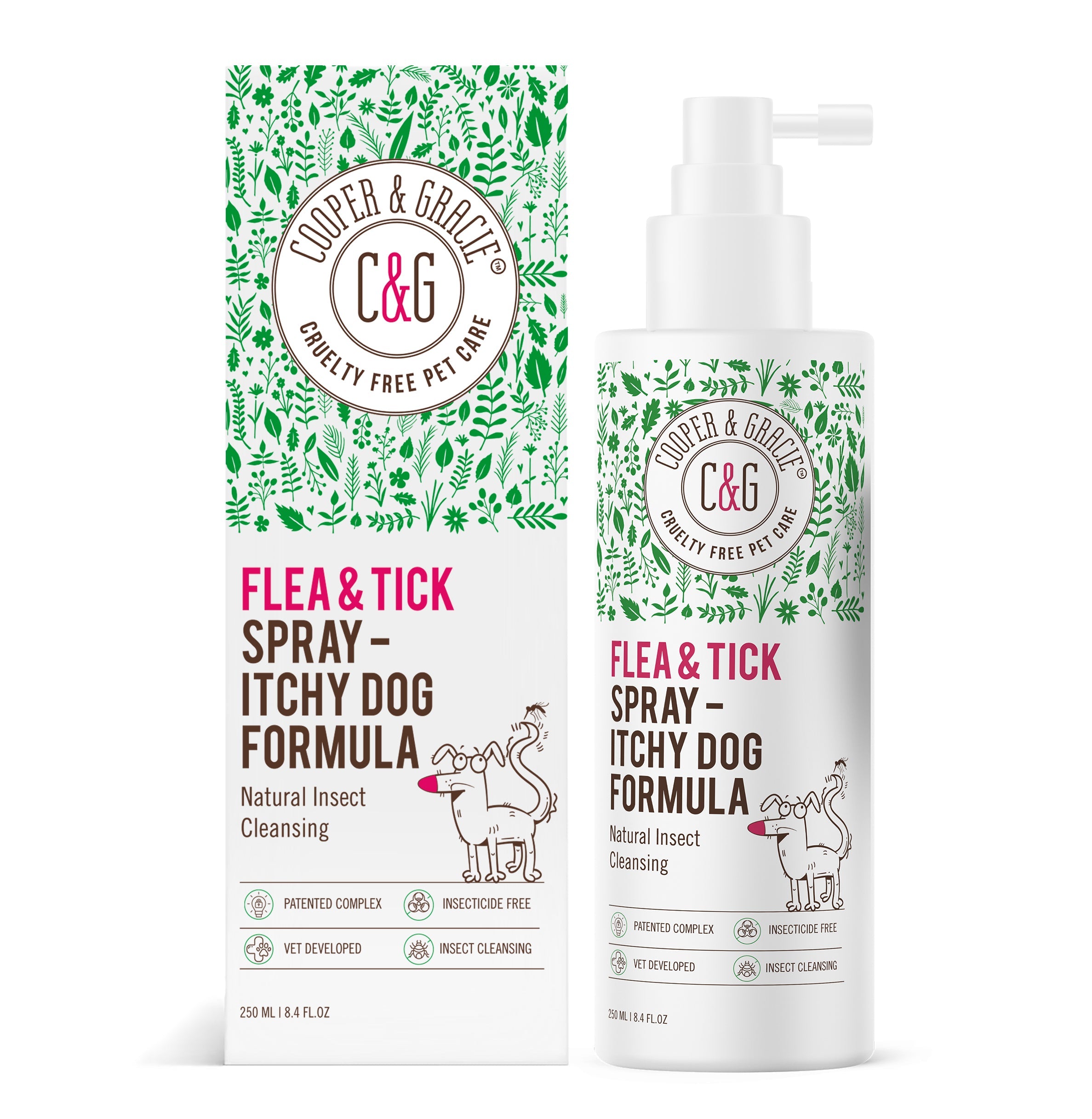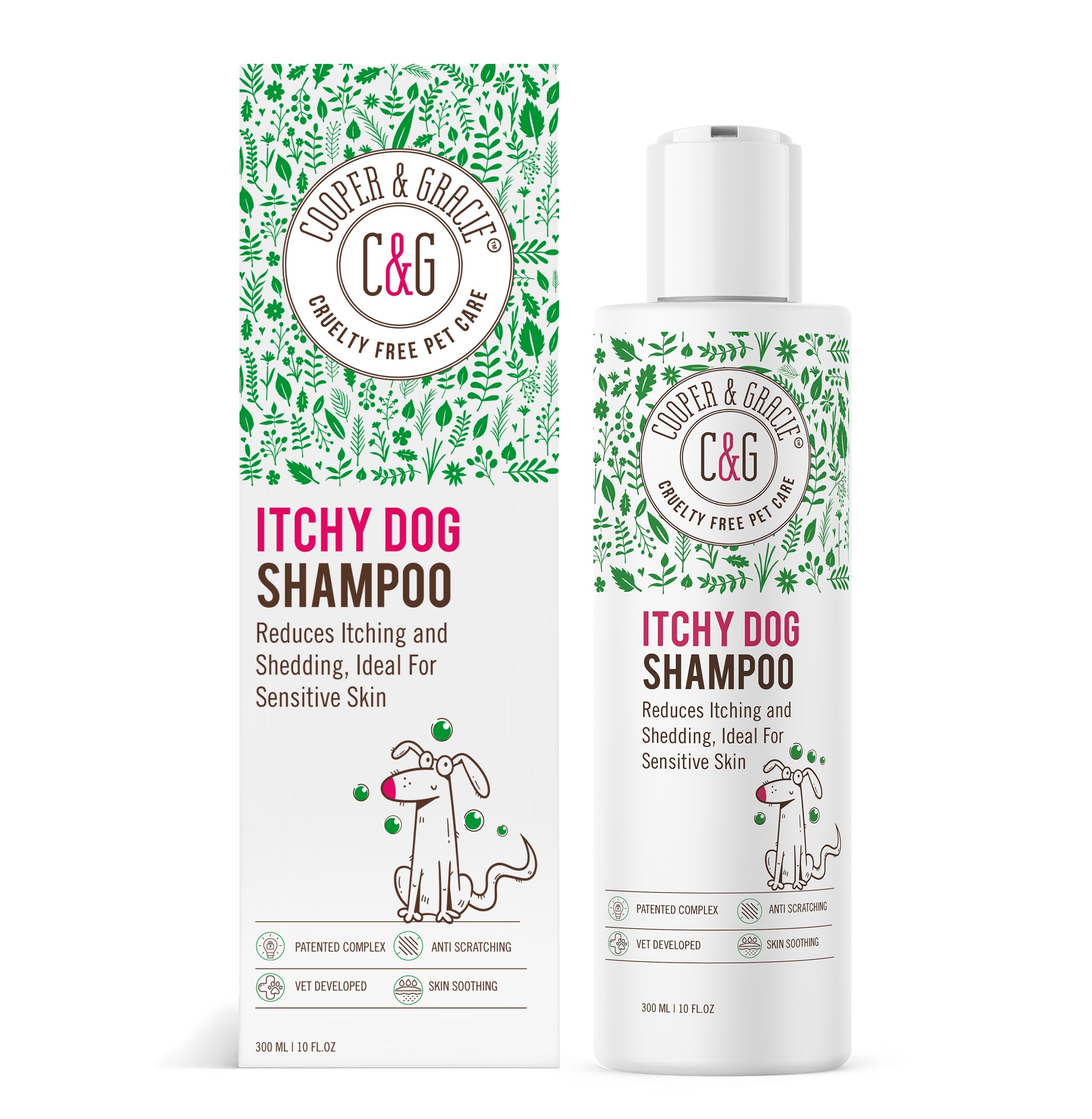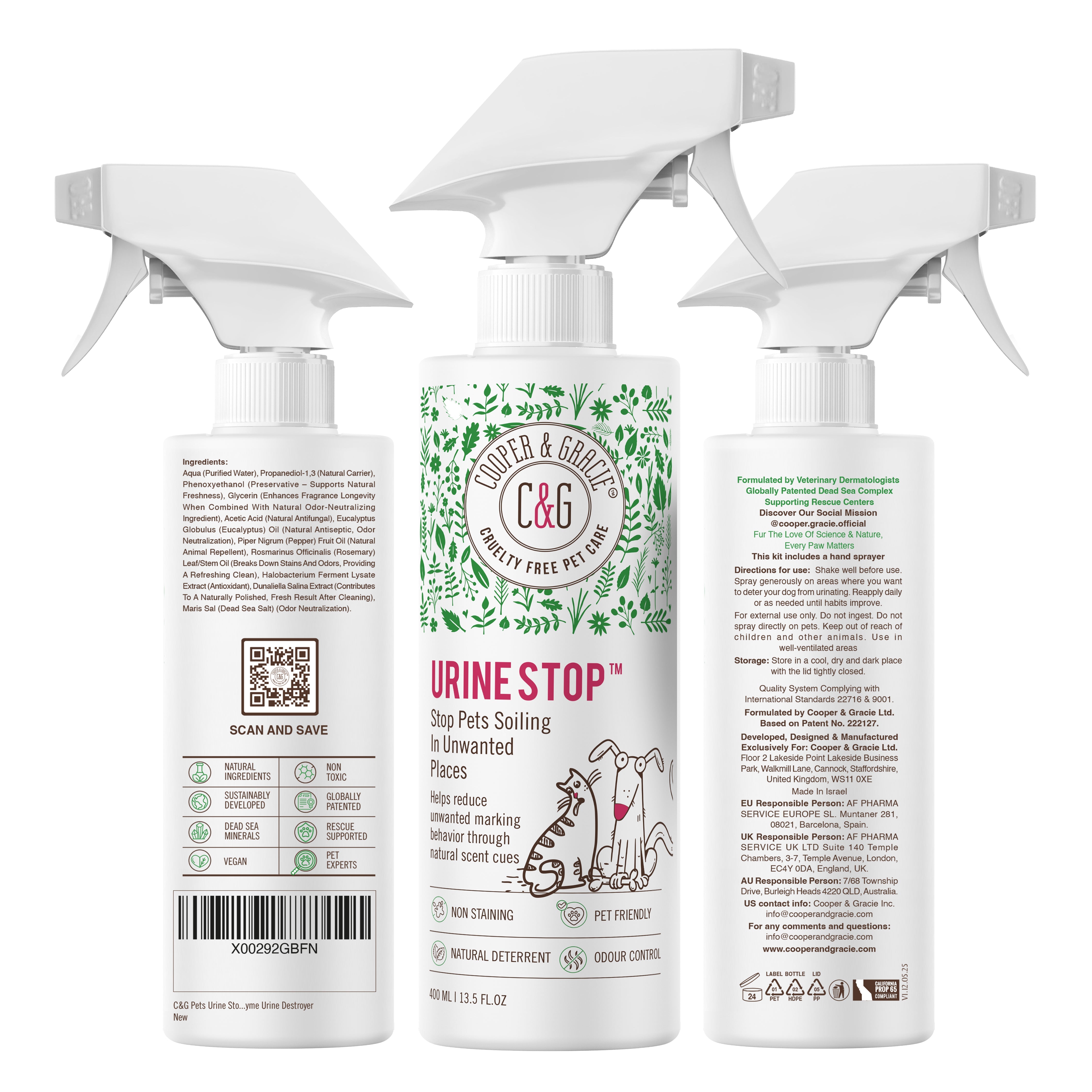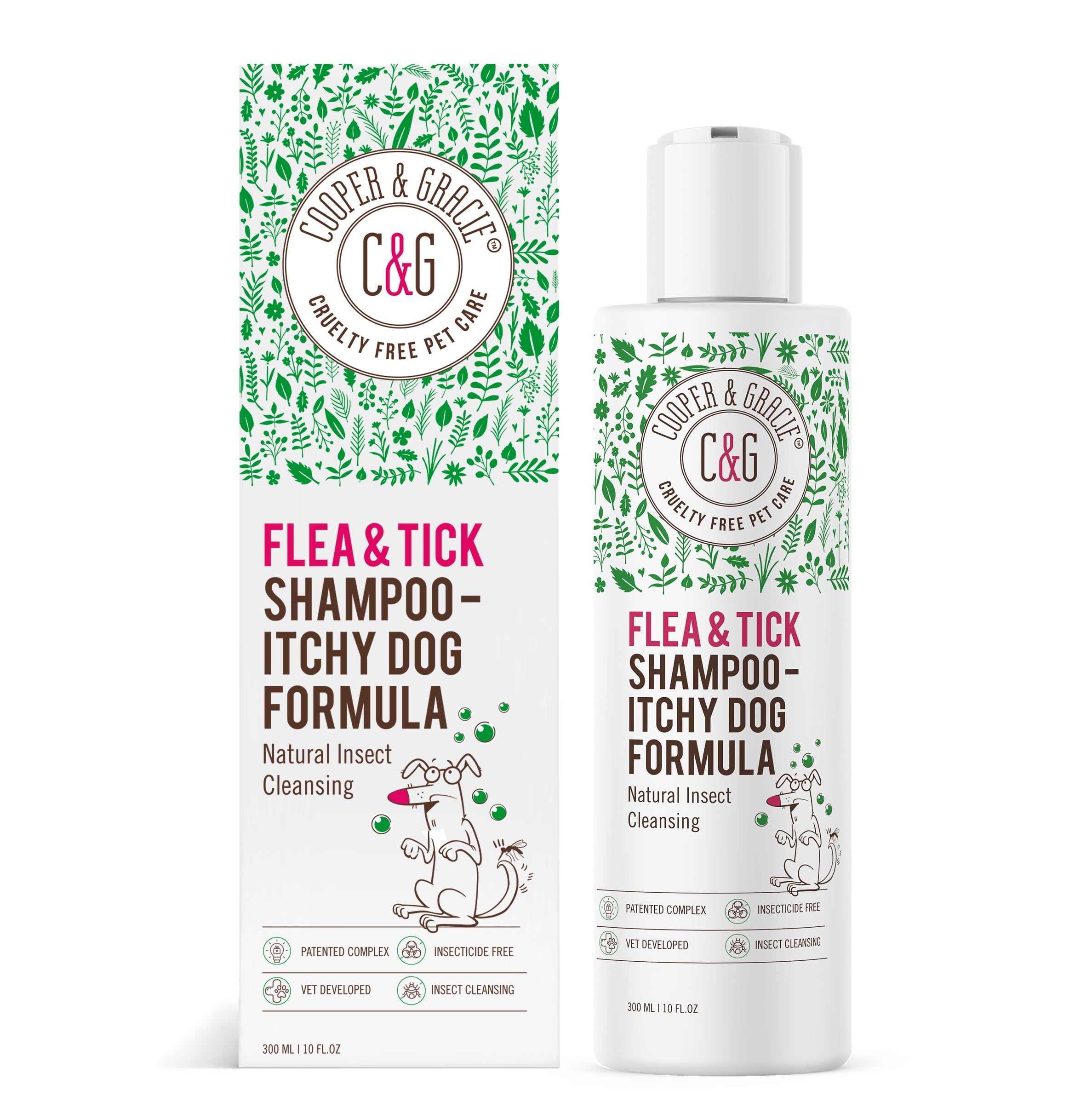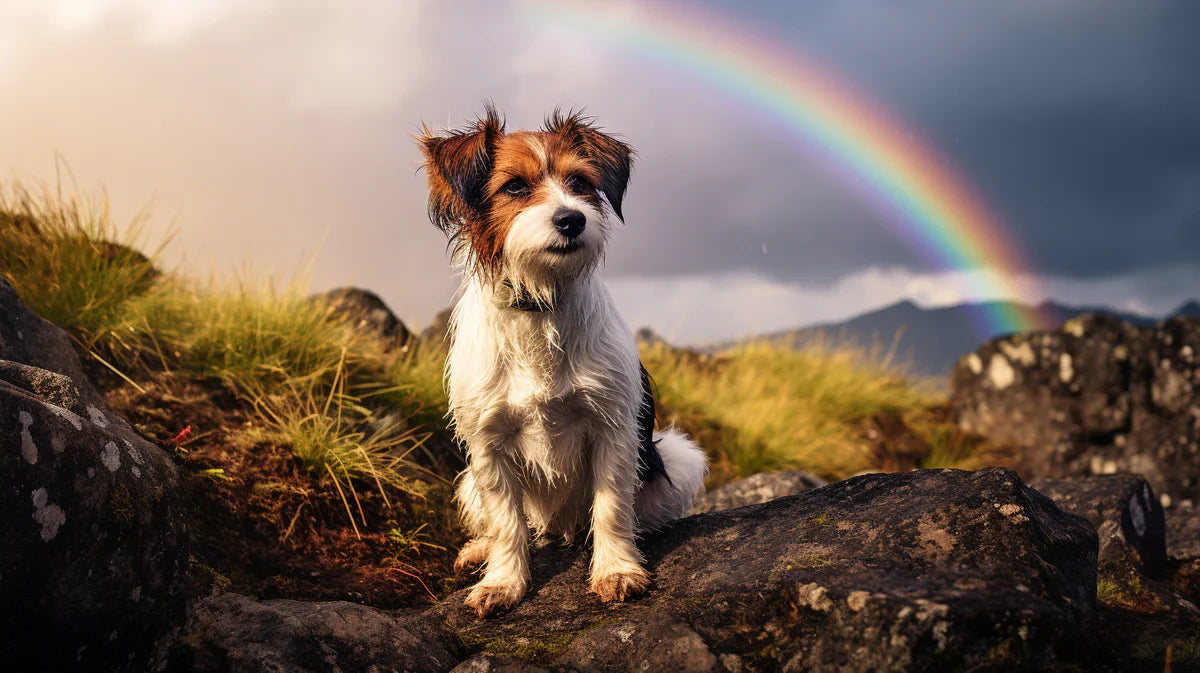Introduction to Canine Vision
Dogs, known for their loyalty and companionship, experience a world that's visually different from ours, particularly in their perception of colour. We will explore the specific colours that are most vivid and recognisable to dogs, and how this differs significantly from human colour perception. This is important as these insights not only enhance our understanding but also help strengthen the bond we share with our dogs, as we gain a deeper appreciation for how they perceive the world around them.
Understanding Dog Vision
The Science Behind Canine Eyesight
Canine eyesight is fascinating and complex, deeply rooted in their evolutionary history. Dogs' eyes are structured in a way that caters to their needs as hunters and nocturnal creatures. The key to understanding their vision lies in the composition of their retinas, specifically the photoreceptors known as cones and rods.
Photoreceptors: Cones and Rods
-
Cones for Colour Vision Dogs have two types of cone photoreceptors in their eyes, compared to three in humans. These cones are responsible for colour perception. In dogs, these cones are best at detecting two colours: blue and yellow. This limited range means that dogs see the world in a somewhat muted palette, primarily in these two colours, along with various shades of grey.

-
Rods for Low Light Vision The most significant aspect of a dog's vision is their abundance of rod photoreceptors. Rods are incredibly sensitive to light and are crucial for low-light vision. This is why dogs excel in seeing in dim lighting conditions. The high number of rods in their eyes provides them with excellent night vision and motion detection, which is far superior to that of humans. This adaptation was crucial for their ancestors who hunted and survived in low light conditions.
Adaptations for Enhanced Vision
-
Tapetum Lucidum Another vital component in a dog's eye is the tapetum lucidum, a layer of tissue behind the retina. This layer reflects light back through the retina, increasing the light available to the photoreceptors. This is what gives dogs their distinctive eye shine in the dark and further boosts their ability to see in low light.
-
Field of View and Depth Perception Dogs also have a wider field of view compared to humans, which is advantageous for spotting movement over a broad area. However, this comes at the cost of slightly less effective depth perception. Their eye placement, more towards the side of their head, gives them a panoramic view, making them excellent at detecting motion but not as adept at judging distances as humans.
In essence, the science behind canine eyesight reveals a visual system that is beautifully adapted to their needs. While they may not see the rich tapestry of colours that humans do, their vision is perfectly attuned to their environmental and evolutionary requirements, making them skilled in ways that complement their lifestyle as domestic companions and descendants of nocturnal hunters.
What Colours Can Dogs See?
Debunking Common Myths
There are several misconceptions about how dogs see the world, with the most common being that they only see in black and white. Scientific research, however, tells a different story. Dogs do see colours, but not in the same way humans do. Their vision is dichromatic, which means they have two types of colour receptors in their eyes, compared to the three types that humans have. This results in a different colour perception, where dogs see the world primarily in shades of blue and yellow. The idea that dogs see only in black and white is therefore a myth. Understanding this aspect of canine vision helps us appreciate the evolutionary adaptation of their sight, which, while different from ours, is perfectly suited to their needs and activities.
The Colour Spectrum of Dogs
Contrary to the black and white myth, dogs have a limited yet definite colour spectrum. They primarily perceive colours in the blue and yellow range. This dichromatic vision means they see the world differently from humans, who have trichromatic vision. For dogs, colours like red and green are not perceived in the same vibrant way as humans see them. Instead, these colours may appear as different shades of grey or brown. This unique perspective of the world has implications for how dogs interact with their environment, including how they distinguish objects and react to different stimuli.
The Best Colours for Dogs
Given their unique vision, certain colours are more visible and attractive to dogs. Blue and yellow are the most prominent colours in a dog's world. These colours are more likely to catch a dog's attention and stimulate their interest. This understanding is particularly useful for dog owners and trainers in selecting the right colours for toys, training aids, and accessories. Using toys in shades of blue and yellow can enhance a dog's engagement and enjoyment. Similarly, using these colours in training can help in capturing a dog's attention more effectively. By choosing items in these dog-visible colours, owners can ensure a more enriching and stimulating environment for their pets, contributing to their overall happiness and well-being.
What Colours Can Dogs Not See?
When exploring the topic of canine vision, it's not only important to understand what colours dogs can see, but also to comprehend which colours are beyond their visual spectrum. The key to this understanding lies in knowing that dogs have dichromatic vision, meaning they have two types of colour receptors in their eyes, compared to the three types in human eyes (as discussed above).
Colours Outside a Dog's Visual Spectrum
-
Red and Green: Limited Perception One of the most significant limitations in a dog's colour vision is their inability to see red and green as humans do. These colours may appear as shades of grey or brown, lacking the vibrancy and distinction they have for human eyes. This is because dogs lack the red-sensitive cone that humans have, making it difficult for them to distinguish between red, green, and certain shades in between. For example, a red ball thrown on green grass might be challenging for a dog to locate, as both colours might blend into one another from the dog's perspective.
-
Shades and Nuances It's also important to note that while dogs can see blue and yellow, the range of shades and nuances they perceive within these colours might be limited. Their world is not as rich in colour variety as it is for humans, with certain subtle differences in shades likely going unnoticed. This means that while they can distinguish blue and yellow objects from the environment, they might not perceive all the shades and tones that humans can within these colours.
Practical Implications for Dog Owners
Understanding what colours dogs cannot see can have several practical implications for dog owners:
- Toy Selection: Choosing toys in colours that dogs can see, such as blue and yellow, is more beneficial. This helps in ensuring that the toys are easily visible and more engaging for the dog.
- Safety Considerations: In situations where visibility is crucial for safety, like in choosing collars, leashes, or outdoor wear, it's advisable to avoid reds and greens. Instead, opting for colours within a dog's visual spectrum can enhance their visibility.
- Home and Training Environments: When setting up spaces for dogs, whether at home or in training areas, incorporating colours they can see well can make the environment more stimulating and comfortable for them.
How Dogs React to Different Colours
Dogs' reactions to different colours can vary significantly, influencing their behaviour and preferences. For instance, colours within their visible spectrum, like blues and yellows, tend to attract more attention and may elicit a more enthusiastic response during playtime. On the contrary, colours like reds and greens, which appear more muted or greyish to dogs, might not be as stimulating.
This variation in response is crucial for pet owners to understand, as it affects everything from the choice of toys to their pet’s overall interaction with their environment. Studies have shown that dogs might show preferences for certain coloured toys, or might be more attentive to training cues displayed in colours they can easily perceive.
Practical Applications
Choosing the Right Colours for Dog Toys
The colour of dog toys plays a significant role in how engaging they are for pets. Toys in blue and yellow are more likely to stand out to dogs, making these colours ideal choices. A bright blue ball or a yellow frisbee can be more appealing and easier for dogs to track, especially in grassy or outdoor settings where their dichromatic vision is most beneficial. On the other hand, toys in colours like red may blend into the green grass from a dog's perspective, making them harder to locate. By selecting toys in colours that are within a dog's visual spectrum, owners can enhance playtime, ensuring their dogs are more engaged and stimulated.
Colour Considerations in Dog Training
Colour also plays a crucial role in dog training. Training aids and equipment in dog-visible colours can significantly enhance the training process. For instance, agility equipment in blue or yellow can help dogs better navigate courses, as these colours are more distinguishable to them. Similarly, training pads or targets in these colours can be more effective in capturing a dog's attention during obedience training. Understanding the impact of colour on a dog's perception enables trainers to create more effective, engaging, and enjoyable training sessions. This consideration not only improves the efficiency of training but also contributes to a more positive and stimulating learning experience for the dog.
The Impact of Colour on Dog Behaviour
Recent research has shed light on the fascinating ways in which colour influences dog behaviour. Studies suggest that dogs may show a preference for certain colours over others, which can affect their choices in toys and their interaction with their environment. For example, a dog might be more inclined to play with a blue toy over a red one, simply because the blue is more visually stimulating to them. Additionally, colours can also influence a dog's mood and energy levels. Brighter colours within their visible spectrum may excite and engage them more, while colours they can't perceive well might not elicit much response.
Interpreting a Dog's Colour Perception
Gaining an understanding of how dogs perceive colour opens up new avenues for enhanced communication with them. Recognising the colours they can see and respond to can help in training and in creating a comfortable living environment.
For instance, using the right colours in training tools can make commands and cues clearer and more distinct for dogs, aiding in quicker and more effective learning. Similarly, choosing accessories and bedding in colours they can see can make their living spaces more visually appealing and comfortable for them.
Conclusion: Enhancing Our Understanding of Dogs
In conclusion, delving into the colours dogs see best not only enriches our knowledge about our canine companions but also plays a vital role in strengthening the bond we share with them. By understanding their unique visual capabilities, we can make more informed choices in everything from the toys we provide to the training methods we employ. This deeper comprehension of our dogs’ perception of the world helps us create a more empathetic, engaging, and nurturing environment for them, enhancing both their well-being and our relationship with them.
FAQs
-
Do dogs see in colour or black and white? Dogs do indeed see in colour, but their colour perception is different from humans. While humans have three colour receptors (red, green, blue), dogs only have two (blue and yellow). This means dogs can see blues and yellows but cannot distinguish between red and green, which appear more as greys or blends of yellows and blues. Therefore, it's inaccurate to say dogs see only in black and white; rather, their colour vision is limited compared to humans.
-
Which colours are most visible to dogs? The most visible colours to dogs are blue and yellow. Since their colour vision spectrum is primarily based on these two colours, they can see various shades of blue and yellow quite distinctly. On the other hand, reds and greens are not easily distinguishable by dogs and often appear as greyish or muddy tones. This understanding is crucial when choosing toys or training aids, as choosing the right colours can enhance a dog's interaction with these objects.
-
How does colour perception affect dog behaviour? Dogs' behaviour can be influenced by their colour perception in various ways. For instance, in choosing toys or training equipment, using colours that are more visible to dogs, like blues and yellows, can increase their interest and engagement. In agility training, using the correct colours for equipment can help dogs navigate the course more effectively. Additionally, dogs might be less interested or even confused by items in colours they cannot perceive well, like red or green.
-
Can the colour of toys impact a dog's interest? Yes, the colour of toys can significantly impact a dog's interest. Toys in colours that are more visible to dogs, such as blue and yellow, are likely to attract more attention and encourage play. In contrast, toys in red or green might be less appealing because these colours appear less vivid and more muted to dogs. This understanding can be especially helpful in selecting toys that will stimulate a dog's visual senses and enhance their playtime experience.
-
How can understanding dog vision improve training methods? Understanding dog vision can greatly improve training methods by allowing trainers to select appropriate colours for training aids and environments. For example, using blue or yellow for agility equipment can make it easier for dogs to distinguish the course layout. Similarly, in obedience training, using high-contrast colours can help in drawing the dog's attention to specific cues or targets. This knowledge aids in creating a more effective and dog-friendly training environment, making learning processes more efficient and enjoyable for dogs.
Enhance Your Dog's World with Cooper and Gracie's Vibrant Solutions
At Cooper and Gracie, we understand the unique way your beloved dogs perceive the world. As passionate dog lovers ourselves, we’ve crafted a range of products that cater specifically to the dogs that you love. We take pride in offering eco-friendly, cruelty-free products, ensuring that while your dog enjoys a vibrant and stimulating environment, you're also making a positive impact on the planet. So why wait? Dive into our colourful and conscious world at Cooper and Gracie, and see the difference it makes in your dog's life. Let’s make every wag of their tail a colourful one. Shop with us today and bring a new spectrum of joy to your dog’s world!
Related Posts
How to Get Rid of Mites on Dogs
Why Does My Dog Stick the Tip of His Tongue Out When I Pet Him?

